When starting your chicken flock, the primary consideration is typically the breed to choose.
You also want to assess the bird’s ability to withstand harsh weather, the number of eggs it produces, and even the bird’s aesthetic value.
When it comes to Ameraucana chickens, one of its most characteristic features are its unique eggs.
The Ameraucana chicken has gained popularity, primarily due to the gorgeous pastel blue eggs it produces.
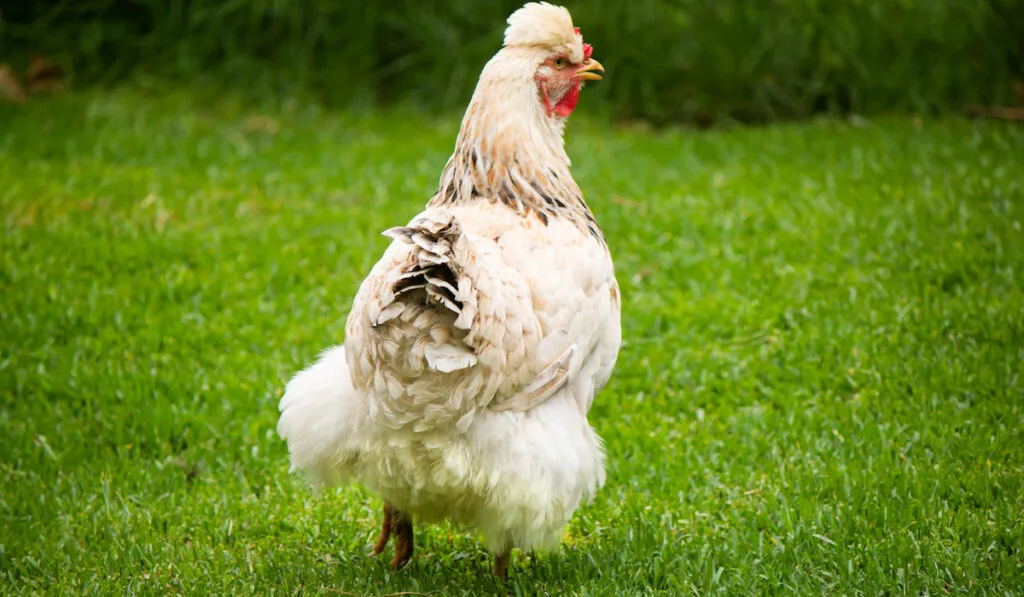
The Ameraucana is a relatively new breed of chicken, created in the United States in the 1970s.
Even though they are closely related to the Araucana chicken, there are some differences.
While Ameraucana chickens are found in various colors, and their fluffy beards and muffs make them look adorable, their fiery eyes, red pea comb, and wattles give them a menacing appearance.
All these features make this bird truly eye-catching!
If you are seeking a good family breed that lays blue eggs, the Ameraucana breed is worth considering.
Table of Contents
Key Information
| Standard Cock Weight: | 6.5 lbs |
| Standard Hen Weight: | 5.5 lbs |
| Bantam Cock Weight: | 30 ounces |
| Bantam Hen Weight: | 26 ounces |
| Use: | Egg production and as show birds |
| Country of Origin: | United States |
| Egg Size: | Medium-sized blue eggs |
| Egg Production: | 280 per year |
| Lifespan: | 7–8 years |
| Climate Tolerance & Care: | Quite hardy and low-maintenance |
| Color: | Wide range |
| Temperament: | Charming, docile and sweet birds that adore spending time with people |
| Price: | Affordable, at around $20 each |
Origins
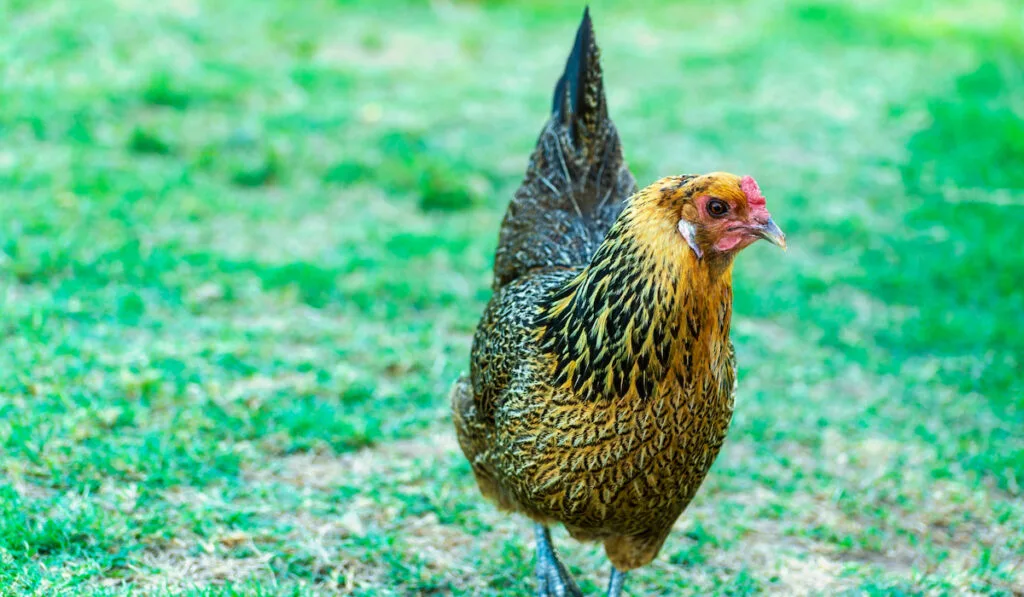
Newcomers From Chile
In 1927, a New Yorker named Ward Brower Jr. discovered that certain hens in Chile produced eggs with blue shells.
He had a passion for birds and a desire to create a new breed. Therefore, he was determined to bring some of these exotic birds from Chile to the United States.
However, due to a serious genetic problem, the original Chilean Mapuche chickens, also known as Araucanas, were uncommon.
Chilean chickens were carriers of a deadly gene, making breeding difficult. Certain genes in this breed sometimes caused the death of their chicks.
Despite the challenges, Brower was able to bring a rooster and two hens into the country with the necessary genes to produce blue eggs.
The plan was to eliminate the dangerous genes, while keeping their ability to lay blue eggs.
Initially, the newcomers’ eggs were white or brown. However, one day Brower noticed that one of the shells had a very slight blue hue.
He worked for years and carefully chose which hens to breed to make the blue color of their eggshells stronger.
Easter Egg Chicken
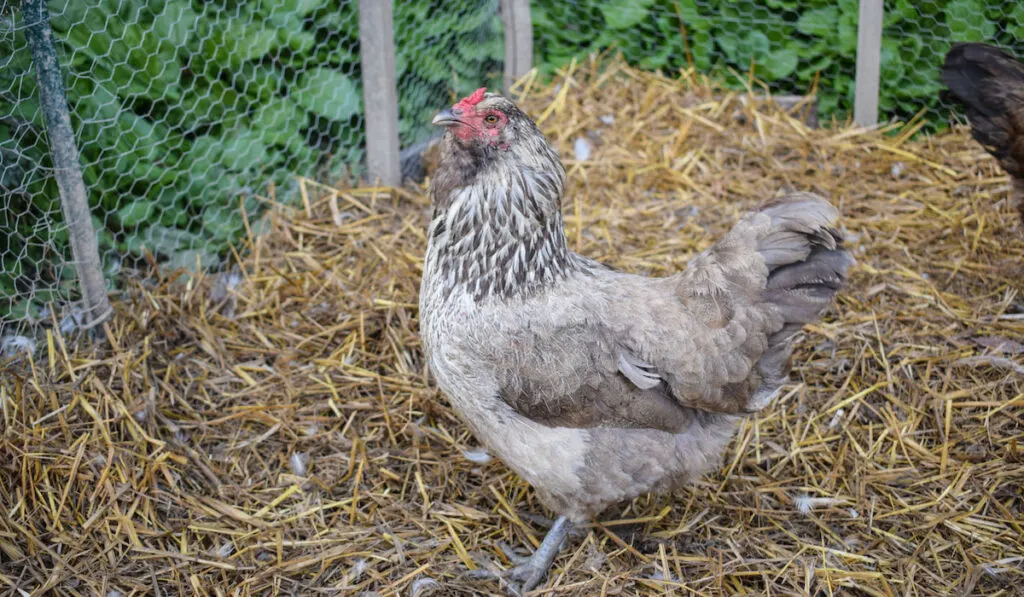
Brower managed to breed chickens that he called “Easter Egg chickens,” another name for Araucanas.
When the idea of having a blue egg-laying hen gained popularity, many breeders raced to develop a breed with a stable genetic background. They developed a variety of birds with distinct characteristics.
Ameraucana Chicken
A breeder named Mike Gilbert continued to work on his unique blue-egg chicken breed. He teamed up with a group of other breeders to carefully blend Easter Eggers with other birds.
The modern Ameraucana that we know today is a direct result of their efforts.
Typical Traits
Their Faces
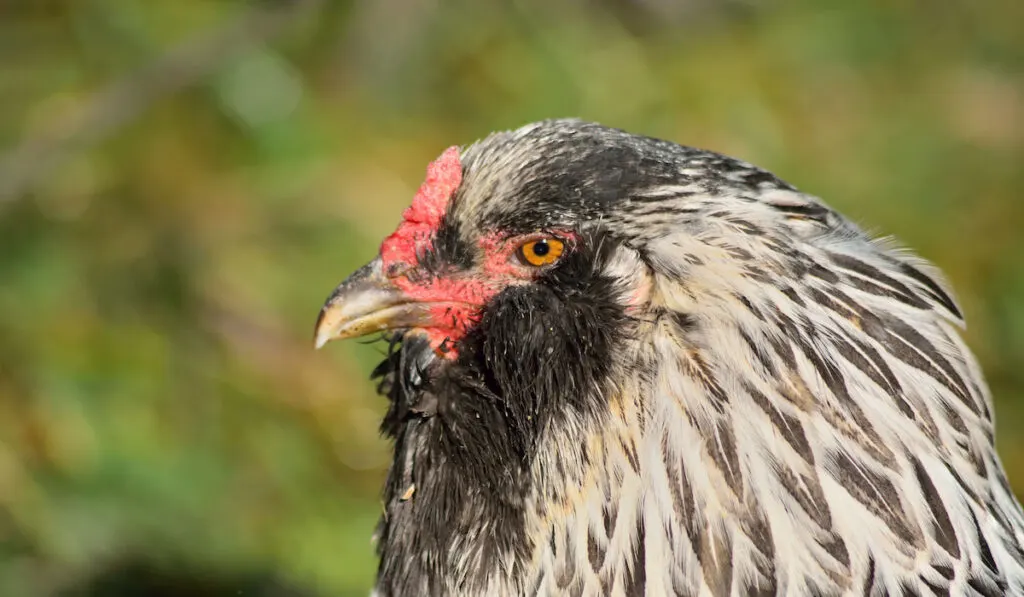
The beard and muff give the Ameraucana’s face a cute and cuddly appearance. The beard on this bird is round and soft, without any prominent tufts.
The Ameraucana has a rather average-sized head with a black, half-curved beak that makes it easy to spot.
While they are rather docile creatures, their scarlet, pea-shaped crest and red eyes give them a fierce appearance. If they have a wattle, it is usually small and red.
Their Bodies
An Ameraucana has fluffy, soft feathers, and its tail is positioned at a 45-degree angle.
The Ameraucana chicken’s different colors come from mixing different breeds, which has led to eight different colors that the APS recognizes:
- Brown red
- Buff
- Blue
- Black
- Wheaten
- Blue Wheaten
- White
- Silver
Each foot has four toes, and there should be no feathering on the lower legs.
Since there are many different tones of feathers, the legs will match the overall coloring of the bird. Colors range from black to light blue.
Size
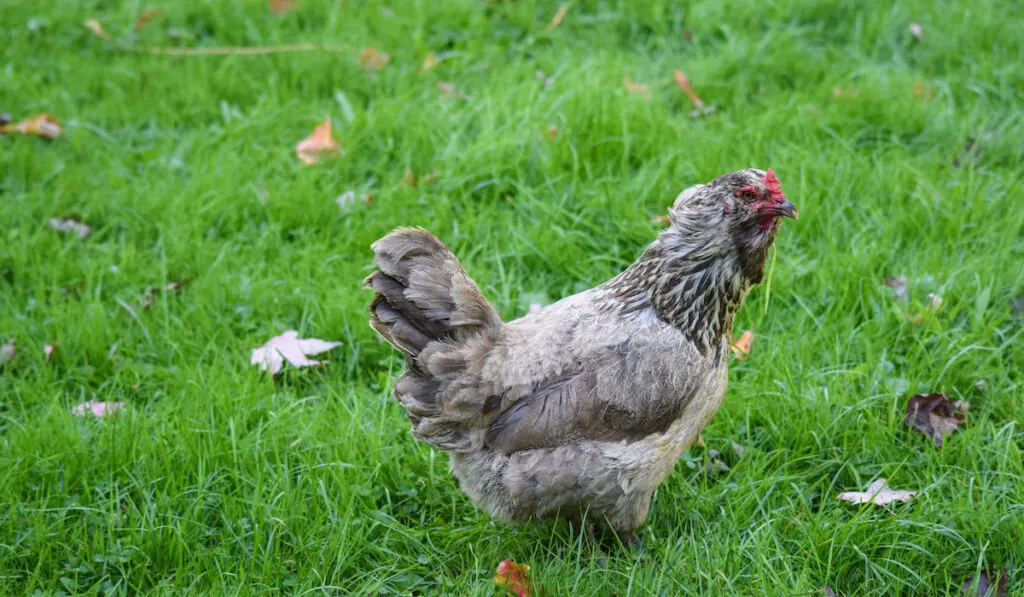
There are two recognized sizes of Ameraucana chickens: large birds and bantams.
Standard/Large Size:
Roosters weigh around 6.5 lbs, while hens come in at 5.5 lbs.
Bantam Size:
Roosters weigh 30 ounces, but the hen only weighs around 26 ounces.
Egg Production
The eggs of the Ameraucana are prized for their baby blue hue.
Although Ameraucanas produce fewer eggs than other breeds, you can count on a regular supply. This breed is a reliable layer, producing an average of three to four medium-sized eggs every week.
While they do lay eggs year-round, you can expect a decrease in productivity during molting and colder months.
To ensure a consistent supply of eggs throughout the colder months, you should provide your birds with a warm light and sufficient nutritious food.
Ameraucanas typically take some time to begin laying eggs. Egg production may begin between five and six months of age.
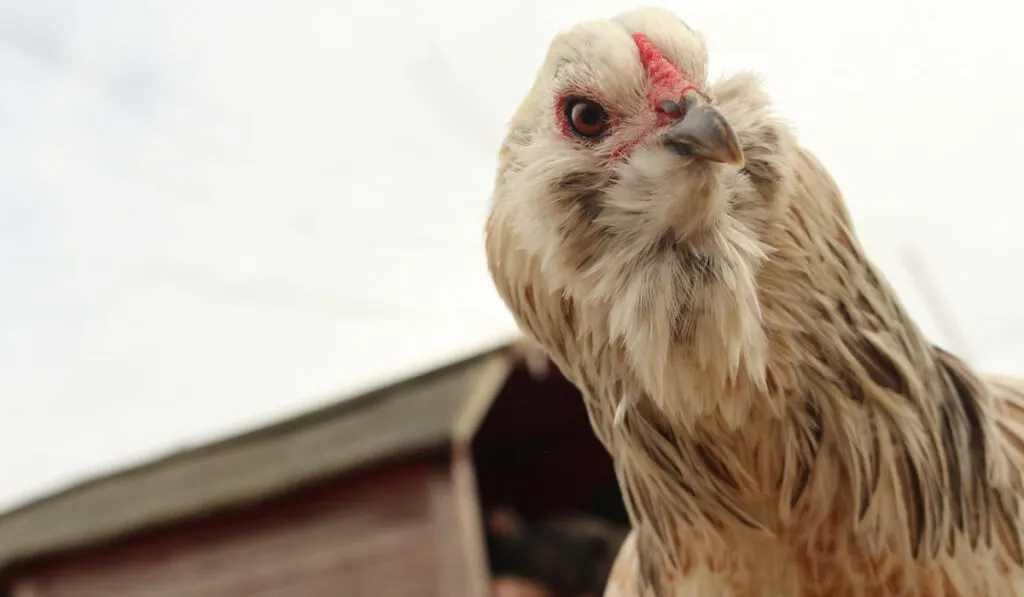
Temperament
The Ameraucana is among the most calm, docile, and friendly chicken breeds.
Most experts agree that they are bright, funny, and remarkably flexible creatures that can thrive in a wide variety of settings.
Lovely and tame, these birds like engaging with their human friends. As long as their humans are around, they’ll cheerfully accompany them about the yard.
They might even become your dog’s friend, grooming them and removing any unpleasant insects.
They are social birds that enjoy human company, but they shouldn’t be mistaken for lap chickens.
Some Ameraucana chickens may not enjoy being picked up, but this depends on each individual chicken. If you start handling baby chicks early, the hens will rapidly learn to trust and enjoy your company.
They get along well with most other bird breeds, as they are not aggressive or short-tempered. However, make sure to protect them from other, more aggressive chickens.
Make sure that your Ameraucana chickens feel safe. If you want peace among your birds, it’s important to keep an eye out for aggressive individuals and take the necessary precautions to protect your chickens.
Ameraucanas are free-spirited birds who thrive when given the opportunity to roam.
Unfortunately, Ameraucana hens do not often go broody and do not have the patience to sit on their eggs until they hatch.
On the other hand, Ameraucana roosters are friendlier than other rooster breeds, but you should still be careful around children.
Overall, this breed is peaceful and lovable, and their personality make them ideal for families with children.
Health and Care
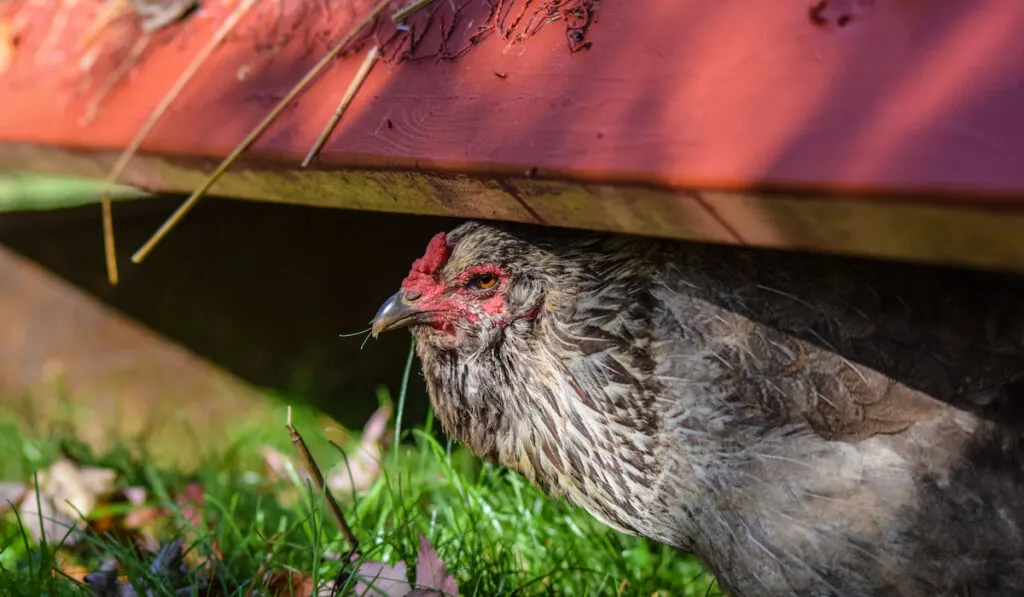
Unlike its ancestor, the Ameraucana has no significant health problems. They are hardy, low-maintenance birds that require no extra care or attention.
On average, their lifespan is seven to eight years. They tend to outlive other breeds in their flock, because they are excellent foragers who are also savvy about their enemies.
This breed can handle a range of weather conditions. They do well in cold weather, but Ameraucanas may struggle in hot and humid climates.
Most of this bird’s health issues are caused by an inadequate diet, stress, poor living and housing conditions, or a dirty environment.
To keep your chickens healthy, provide them with a well-balanced diet, a proper coop, and space to run.
It’s also important to ensure your birds get dewormed and are checked regularly for lice, mites, fleas, and ticks.
To help your chickens stay clean, arrange a dust bath for them. A dust bath is an excellent way for birds to remove insects or detritus from their feathers.
Breeding
At 16–24 weeks of age, hens are considered sexually mature. However, because Ameraucanas rarely go broody, natural breeding might be challenging.
That’s why you should consider alternatives, such as an incubator.
Chicks usually hatch at around three weeks. The exact timeframe can differ from natural to artificial incubation.
If you want to expand your flock quickly, you should prioritize maintaining a healthy group of birds before you start breeding.
Don’t forget that chickens living in poor or stressful conditions may stop laying eggs.
If you are new to breeding Ameraucanas, you should seek the guidance of an expert.

Breed Considerations
The Ameraucana and the Araucana are the only pure breeds of chicken in the world that produce blue eggs, and both are quite rare.
Since purebred Ameraucanas are still quite rare, if you find one for sale for less than $10.00, chances are it is not a legitimate Ameraucana.
The price of a purebred Ameraucana hen is roughly $20.00, while a rooster should cost around $18.00.
An Easter Egger is a cross between an Ameraucana or Araucana and another breed. It carries the gene for blue eggs, but it is not officially recognized as a breed.
Chickens labeled “Americana” or “Ameraucana” are widely available from commercial hatcheries. However, many times, these chickens are actually Easter Eggers.
If you want to be sure you’re buying pure-bred Ameraucana chickens, buy them from a breeder you can trust.
Final Thoughts
If you want light blue eggs, the Ameraucana is the best chicken to add to your flock, because it is cheerful, friendly, and pleasant.
An Ameraucana hen will provide your family with a regular supply of delicious and healthy eggs.
They excel at finding food on their own and enjoy the chance to roam freely. They are also relatively quiet and gentle, which makes them ideal if you have close neighbors.
These birds have excellent health. They are hardy and low-maintenance and do not require special care or handling.
The Ameraucana is an intelligent and friendly chicken that is ideal for your backyard!
Resources
- http://ameraucana.org/Ameraucana%20Standard
- https://domesticanimalbreeds.com/ameraucana-chicken-breed-everything-you-need-to-know/
- https://en.wikipedia.org/wiki/Araucana
- https://chickenmag.com/easter-egger-vs-ameraucana-vs-araucana-blue-egg-layers/
- https://www.livestocking.net/ameraucana-chicken-breed
